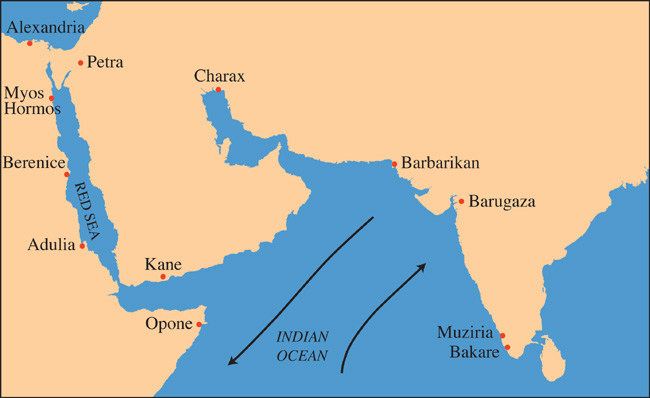Indian Ocean Trade
"In this port of trade [Barbarikon]
there is a market for clothing with no adornment (in good quality), of
printed fabric (in limited quantity), multicolored textiles, peridot,
coral, storax, frankincense, glassware, silverware, money, and wine (in
limited quantity). As return cargoes it offers costus, bdellium, lykion,
nard, turquoise, lapis lazuli, Chinese pelts, cloth and yarn, indigo...."
(Periplus Maris Erythraei XXXIX)

The Periplus Maris Erythraei was written by an Egyptian Greek,
at least partly from personal experience around A.D. 4070. It is now
our most informative source on Roman trade on the Indian and African coastlines.
For their journeys back and forth across to India, ships coming out of
the Red Sea ports could take advantage of the monsoon winds which blow
out of the southwest during the summer and out of the northeast during
the winter. Only Barbarikon is known to have imported finished glassware.
But the ports of Bakare and Baraguza imported cullet which was then processed
at various towns further inland (see manuscript sections IL and LVI).
REFERENCES
1) Casson, L., 1979: The Periplus Maris Erythraei, pp. 75, 81 and 85 (Princeton: Princeton University Press).
2) Whitehouse, D., 1990: "The Periplus Maris Erythraei" Journal of Roman Archaeology 3, 489493.